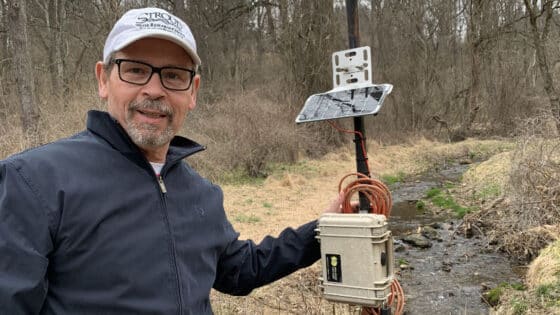Arscott, D.B., W.B. Bowden, and J.C. Finlay. 2000. Journal of the North American Benthological Society 19:263–273.
Abstract
AbstractLong-term (13 y) experimental P enrichment of a 4th-order reach of the Kuparuk River (North Slope, Alaska) had little effect on the distribution, abundance, or metabolism of a common, clump-forming bryophyte (Schistidium [Grimmia] agassizii), but promoted rapid and extensive growth by mat-forming, streamer bryophytes (Hygrohypnum alpestre and H. ochraceum) that formerly were rare in the river. In previous research we showed that there were important physiological differences (i.e., photosynthetic efficiency) that helped explain why S. agassizii was able to persist in the river under cold, oligotrophic conditions, whereas H. alpestre and H. ochraceum were not. Here we hypothesize that S. agassizii should be more tolerant than Hygrohypnum spp. to desiccation stress, and that Hygrohypnum spp. would take greater advantage (e.g., greater rates of net primary production) than S. agassizii of elevated temperatures. We did laboratory experiments using small-scale metabolism chambers to test this hypothesis. Desiccation affected net photosynthesis more in Hygrohypnum spp. than in S. agassizii. Hygrohypnum spp. had a greater tolerance to temperatures >20°C than S. agassizii. Further, net photosynthetic rates (at light saturation) were significantly higher for Hygrohypnum spp. (1676–6342 μg O2 g−1 dry mass [dm] h−1) than for S. agassizii (428–1163 μg O2 g−1dm h−1) at all temperatures measured. In fact, S. agassizii showed minimal response to increases in light availability and recovered rapidly from desiccation, but was inhibited by high temperature. In contrast, Hygrohypnum spp. were susceptible to desiccation, and responded strongly to increased light and temperature. The physiological attributes we measured helped explain the distribution of our test species in arctic tundra streams.


